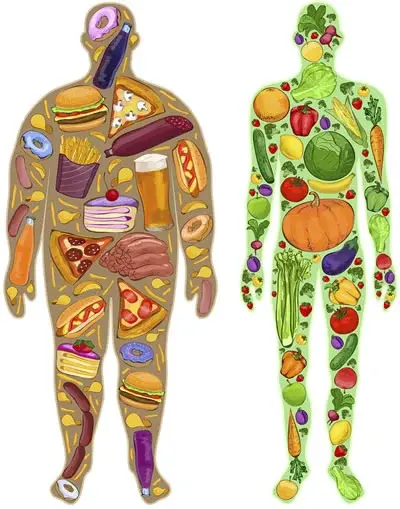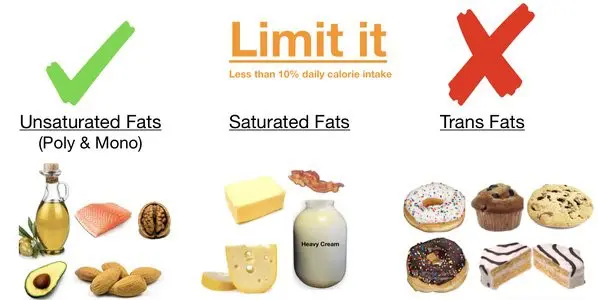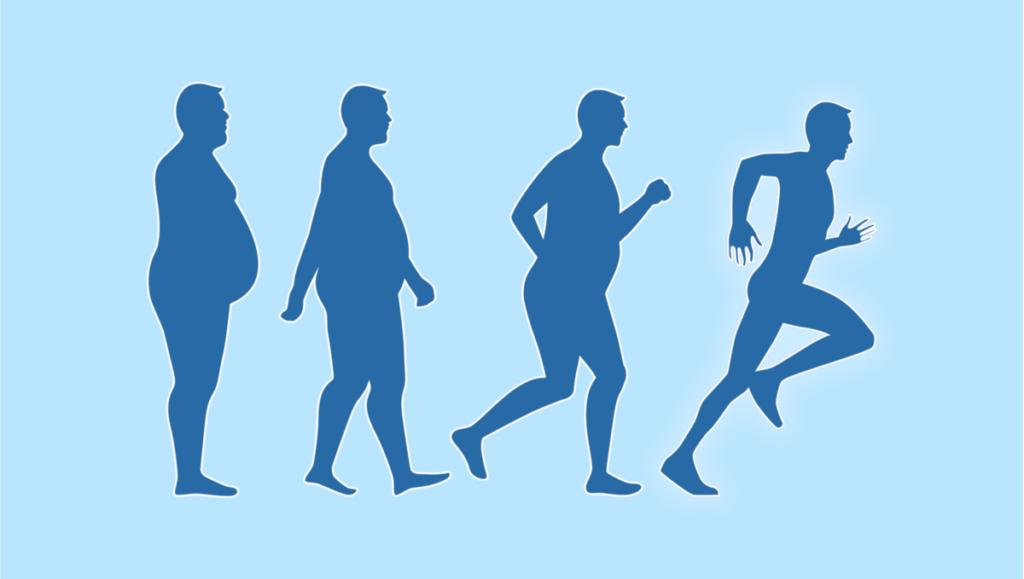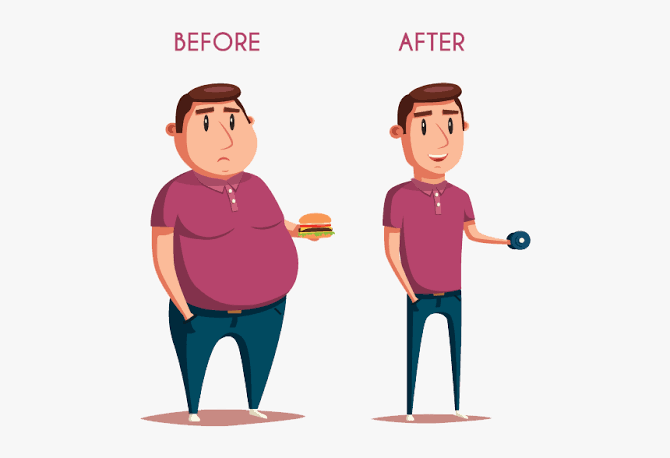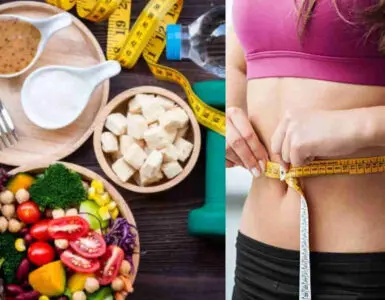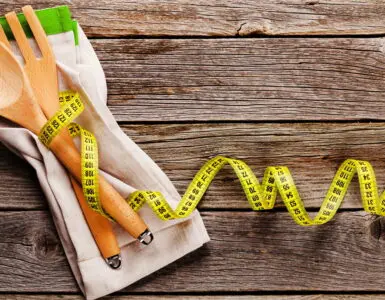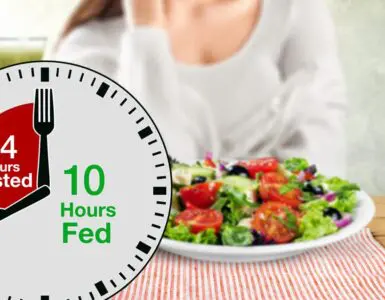If you want to know how to lose 50 pounds in 6 months, you deserve all our respect for being reasonable and sensible. Instead of looking for crash diets with quick results yet doubtful efficacy, you’ll embark upon a relatively slow pace that will bring significant health improvements and help you reach weight loss goals. 180 days is a sufficient period to form a habit of a healthy and active lifestyle and learn to maintain it. Without any further ado, let’s move on to the basics of weight loss, and create a lose 50 pounds in 6 months diet plan.
Page Contents
Healthy Weight Loss In 6 Months: Sustainable Tips To Shed Unwanted Fats
If you have encountered weight problems, you’re probably a true admirer of unhealthy food and lead, mainly, sedentary work and lifestyle. To reap all the benefits from the dietary and exercise regimen you’re about to start, take into account the following tips.
Set Weekly Weight Loss Goals
Losing weight ain’t a childsplay, it requires effort, time, dedication, and inner strength. Sure thing you’ll have lots of moments of despair, loss of motivation, thoughts to quit, etc. However, that’s when you need to win your inner battle to move on. Keep your eyes on the goals, not the obstacles.
You need to keep in mind your final goal, of course, 50 lbs in 6 months. However, it will be easier, if you focus more on your weekly realistic goals. They are smaller and bring you more psychological comfort.
A healthy weight loss is about 1 – 2 pounds per week, which makes 4-8 pounds in 4 weeks [1]. It makes 24 – 48 pounds in 6 months.
1 pound of fat takes on average 3500 calories a week to burn – 500 calories a day.
2 pounds of fat take 7000 calories a week to burn 1000 calories daily.
How to lose 2000 calories a day? — an article on the topic.
These numbers are quite approximate, as long as we need to take into account your weight, height, age, fitness level, and nutrition. Depending on your effort, you can reach the lower limit, or even go beyond. There’s also a body type factor – some let the fat off easier, and some keep it tightly. One way or another, losing 50 pounds in 6 months or getting close to these numbers looks pretty real.
Calculate Your Daily Caloric Needs
The weight loss journey is quite difficult, especially if your goal is 50 lbs in 6 months. Before you start working out insanely in the gym and buy highly-beneficial foods, you need to understand how many calories you need to consume. The basic caloric needs (BMR index) provide you with energy for the proper functioning of your body: breathing, digestion, blood circulation, and work of organs. . Basal metabolic rate (BMR) is determined by your sex, age, and body size. The number you get is the calories that keep you alive to put it simply.
The formula is quite complex, and includes several values:
For women, BMR = 655.1 + (9.563 x weight in kg) + (1.850 x height in cm) – (4.676 x age in years)
For men, BMR = 66.47 + (13.75 x weight in kg) + (5.003 x height in cm) – (6.755 x age in years)
The lower weight you have, the fewer calories your BMR will show. Besides, a woman typically needs fewer calories than men (in the same weight categories), as long as they have more fat tissue, and it’s less active than muscle tissue in burning fat.
The next step is defining your active metabolic rate AMR
Sedentary (little or no exercise) | AMR = BMR x 1.2 |
Lightly active
(exercise 1–3 days/week) | AMR = BMR x 1.375 |
Moderately active (exercise 3–5 days/week) | AMR = BMR x 1.55 |
Active (exercise 6–7 days/week) | AMR = BMR x 1.725 |
Very active (hard exercise 6–7 days/week) | AMR = BMR x 1.9 |
AMR shows a daily calorie intake if you want to stay at your current weight. For weight loss, you need to increase your level of physical activity or decrease the intake of calories from your diet. It means creating a calorie deficit to lose fat.
Recommended reading — Dr Nowzaradan diet.
Find A Diet Plan To Lose 50 Lbs In 6 Months
After defining the number of calories you need daily, it’s time to plan your new diet regimen. It’s important to fill it with high-quality and nutrient-rich foods, to provide your body with sufficient energy, and replenish the levels of nutrients and vitamins.
When people start dieting, they typically stick to a low-carb or low-fat diet or go to extremes, stick to a fruit and vegetable meal plan.
See also — Low-carb diet weight loss in 2 weeks.
An essential thing to remember is to choose the healthy foods you enjoy. It will help you to follow the diet without breaking it. Some may think that healthy foods are not that tasty, and the choice is quite limited. That’s quite a delusion – you may not like some specific food combinations, but on the whole, a healthy diet is naturally tasty and nutritious, without any artificial flavors and intensifiers of taste.
When following a healthy diet, take your time to understand what fits better into your menu. Don’t be misguided by easy and quick weight loss mono diet plans. While they can’t be applicable for several days of usage, in the long run, they will bring you nutrient deficiency and lack of strength.
The best diet plan ever is eating healthy food to cover your metabolic needs and provide you with enough energy for activities. Foods need to feed your physical needs, not emotional hunger (one of the bricks of excess weight).
It’s important to have protein, healthy fats, and carbs.
Eat Non-Starchy Vegetables
Vegetables are a treasure trove of vitamins, minerals, fiber, and phytochemicals. Yet another advantage is low caloric value, despite being pretty nutritious. There are two main types of vegetables—starchy and non-starchy. Both are equally important for our well-being; however, when focusing on weight loss and caloric deficit, it’s better to include more non-starchy veggies on your menu as they have fewer calories.
The choice of non-starchy veggies is immense. The less you cook them, the more nutrients they will preserve. Choose fresh and frozen vegetables, as they are the most beneficial. When choosing canned and pickled veggies, be aware of added sodium, fat, or sugar.
If you can, make the frozen vegetables yourself, if the freezer is big enough. If you give preference to the market items, opt for the ones without salt and sugar.
For better health incorporate at least 3 to 5 servings of vegetables a day. A serving of vegetables is:
½ cup of cooked vegetables or 1 cup of raw vegetables.
Reduce (But Do Not Eliminate) Carbs From Your Diet
Any weight loss program will contain carbs on the list, however, we typically hear, that carbs are the main reason for extra weight. Where’s the truth?
The Dietary Guidelines for Americans [2] recommend that carbohydrates make up 45% to 65% of total daily calories. When you get 2,000 calories a day, between 900 and 1,300 calories should be from carbohydrates – 225 -325 grams of carbs a day.
Before buying anything check the Nutrition Facts label, which shows fiber, total sugar, and added sugars.
Carbs are often found guilty for your weight gain; however, science begs to disagree. Carbs make one of three important bricks that build your menu. They are the main source of energy and can perform as muscle protection. When you want to gain muscle mass and don’t have enough energy from carbs or storage of glycogen, your body starts using lean mass for it.
Carbs are divided into two big categories: simple and complex.
Simple carbs
Simple or quick carbs are easily digested, they quickly get into the bloodstream and immediately provide you with energy. Quick carbohydrates are found in fruits, milk, and milk products. They are also found in processed and refined sugars such as candy, table sugar, syrups, and soft drinks, which are typically a source of extra calories. That’s why, when you need to cut back on carbs, avoid refined and processed sugary types of sneaks.
Complex carbs
Complex carbs are made up of sugar molecules that are strung together in long, complex chains. That’s why they take more time for digestion releasing the energy slowly into the bloodstream. Instead of energy spikes, you just experience a moderate level of energy for a longer period. Complex carbohydrates are found in foods such as peas, beans, whole grains, and vegetables.
How to choose the best carbs?
- Focus on fiber-rich fruits and vegetables. They will help to improve the healthy work of your intestine, which is a part and parcel of weight loss.
- Choose whole grains – they are better sources of nutrients than refined grains. Refined grains go through a process that strips out parts of the grain — along with some of the nutrients and fiber.
- Avoid dairy products with added sugar and a high percentage of fat. However, consuming zero-fat milk or yogurt may cause overeating.
- Legumes are excellent sources of complex carbs. Eat plenty of beans, peas, and lentils – apart from complex carbs, they will enrich you with folate, potassium, iron, and magnesium. They are a good source of protein and can be a healthy substitute for meat.
- Limit added sugars – the Dietary Guidelines for Americans recommend that less than 10% of calories you eat or drink every day come from added sugar. You’ll be surprised to find added sugar in almost every type of food.
Add Proteins To Your Diet
Proteins are a building component of every cell [3]. During digestion protein foods are broken down into tiny parts called amino acids which help us maintain a proper state of health.
Amino acids are found in nutritious protein foods from:
- animal sources – meats, milk, fish, and eggs Every
- plant sources – soy, beans, legumes, nut kinds of butter, and some grains (such as wheat germ and quinoa).
As you see, there’s no need to eat only animal products to get high-quality protein.
Amino acids are classified into three groups:
- Essential amino acids – aren’t produced by the body, and must be supplied by food.
- Nonessential amino acids are produced by our body from essential amino acids or in the normal breakdown of proteins.
- Conditional amino acids are required in times of illness and stress.
Include Unsaturated Fats
Fats, like carbs, are always blamed for our extra fat-coat. However, we all need some fats in our nutrition plan [4]. Without the balanced intake of fats suffer all the systems of our body – missing out even on the tiniest details, the whole system fails its work, so include them in your weight loss meal plan.
There are two main types of fat – saturated and unsaturated. A healthy intake of fats can help to lower your cholesterol levels and regulate the level of hormones.
Saturated fats
Saturated fats are usually solid at room temperature. The sources:
- dairy foods – cream, cheese, full-fat milk, and yogurt
- ghee, butter, lard, and hard margarine
- fatty and processed meats such as sausages and bacon
- coconut and palm oil.
Everything is good when taken moderately, same as fats. Overtaking saturated fats will raise your cholesterol, which builds up in your arteries. Moreover, saturated fats raise your bad cholesterol (LDL) –> increased your risk for heart disease and stroke. [5]
Unsaturated fats
Unsaturated fats are heart-healthy. They contain one or more double or triple bonds between the molecules. These fats typically have liquid form at room temperature, in oil form and seldom occur in solid foods.
This group breaks down further into two categories, called monounsaturated fats and polyunsaturated.
The majority of foods rich in healthy fats include plant oils like sunflower, safflower, rapeseed, olive, peanut, walnut, and corn oil. Other sources are:
- oils from vegetables, nuts, and seeds,
- avocado
- oily fish such as herring, pilchards, mackerel, salmon, and trout.
Unsaturated fats support brain development, strengthen the immune system, and improve heart health.
Trans fats
Trans fats are widely used due to their cheap production, and help to get more profit as a result. They are made when unsaturated fats are heated to high temperatures during food processing. Some trans fats are present in dairy foods and red meats, but only in small amounts, and these are thought to be safe to eat.
Trans fats raise LDL cholesterol and lower HDL (good) cholesterol. They are typically present in pastries, cakes, biscuits, crackers, fried foods, takeaways, and hard margarine. When buying foods that can contain fats, be sure to avoid ‘partially hydrogenated fat‘ on the label.
Fats are very high in energy, 1 gram of fat = 9 calories. You need to keep an eye on total consumption because overeating leads to weight gain.
About a third of your energy should come from fat. That’s about 70g for a woman and 90g for a man per day.
Drink Lots Of Water
If you want to lose 50 pounds in 6 months, you need to monitor your water intake. Every weight loss program regulates the consumption of liquid throughout the day. Water contains hydrogen and oxygen. It is the basis of our life, as two-thirds of our weight is made of water. Without consuming water, people would die in a few days, as long as every cell needs water to survive.
Water serves as:
- a lubricant – saliva and the fluids surrounding the joints.
- body temperature regulator through perspiration
- intestine performance regulator to prevent constipation.
Some of the water comes from the foods you eat; some from the metabolism processes.
The beverages that replenish water levels – are soup, milk, tea, coffee, soda, drinking water, and juices. Beware of alcohol and excess coffee, they are diuretics and make the body release water. If you do not get enough water, you will face dehydration quite soon, which is life-threatening.
The Dietary Reference Intake for water is between 91 and 125 fluid ounces (2.7 to 3.7 liters) of water per day for adults, which comprises both – foods and beverages. However, personal needs depend on weight, age, activity level, and medical conditions.
Be attentive with sweet drinks, they are full of calories and can cause significant weight gain. Always check the information on the label about the added sugars.
As people get older, they start drinking less water as their thirst level lowers; however, the needs are the same. So, it’s important to set reminders on the free phone app or the sticky notes.
Avoid Starvation At All Times
People who use starvation diets to lose 50 lbs in 6 months, can decrease their body weight significantly; however, they also reduce muscle mass by 5-10 %. If the starving is regular, it will create the conditions for losing 20% lean mass.
While it may seem a happy moment, to see lower numbers on the scales, serious problems are yet to come. Lean mass forms your bones and organs. By reducing the mass of your bones you decrease their density which is a signal of numerous injuries and weaknesses.
Another downside is regaining all the kilos back and more. The faster you lose weight, and the more severe the methods are, the sooner you’ll get everything back.
Besides, there’s one more significant downside – while spending hours thinking about the food you can’t eat, you ruin your psychological health and make the basis for a further and quick weight regain and eating disorders.
Starvation has far-reaching negative effects on the body: slows the metabolism, reduces lean muscle, reduces bone density, and decreases strength physically and psychologically.
Monitor Your Caloric Intake
What goes into your body, must come out – that’s the essential condition of weight control and fat loss.
To lose weight we need to consume a lower number of calories from food and beverages and increase physical activity; lower intake – higher outtake.
To lose 1 pound a week you need to create a 500 calorie deficit every day.
- Women can lose weight safely if they follow a 1,200 –1,500 calories diet + regular workouts.
- Men can lose weight safely consuming 1500-1800 calories + regular workouts.
Lowering your calorie intake to 1000 and less involves high risks to your physical and psychological health. It can only be performed if there’s constant doctor supervision and health conditions for it.
When trying to lose weight, track what you eat or use online calculators. It will help you to see the big picture because typically we don’t understand where the saddles or love handles come from. When you have a calorie diary, mention everything you eat or drink, even a small piece of chocolate or several teeny-tiny french fries, which are pretty fatty.
While it may seem a boring and tiresome task, it will help you be more organized. Besides, this routine will not last forever. Once you get adjusted to healthy nutrition, you’ll no longer need it.
Exercise And Do Physical Activity
Being physically active and eating fewer calories make a keystone for a successful and healthy weight loss.
Those who want to maintain their weight can involve 150 to 300 minutes of moderate-intensity activity during the week.
If the aim is to lose weight – more than 300 minutes of moderate-intensity activity each week.
The precise amount of time spent on physical activities should be defined individually, as long as it heavily depends on your body mass index, sex, age, work, and lifestyle.
As a rule, heavier people lose weight (at the beginning) faster, as long as their body needs more energy to perform the activities. It may seem unfair, but it’s just the way it is.
If you aim to lose 50 lbs in 6 months, then healthy eating must be accompanied by proper and regular exercise, which targets all the major muscle groups. Among the exercises for beginners, we can highlight two main types of workouts – cardiovascular and strength training. In the beginning avoid making unrealistic workout plans – start with a low number of repetitions, and give your muscles time to adjust.
Exercising and dieting take time for individual adjustments. The smoother you enter the weight loss way, the more chances you have to follow it without disruptions.
Cardiovascular Exercise
Cardio is a type of physical exercise of low to high intensity that is based on the aerobic energy-generating process. ‘Aerobic’ relates to the usage of oxygen to meet energy needs during exercise.
Among numerous benefits of cardio workouts, we may single out to main functions:
- Strengthening of muscles involved in respiration, facilitating the flow of air in and out.
- Strengthening and enlarging the heart muscle, improving its pumping efficiency, and reducing the resting heart rate.
This efficiency sounds quite complicated, however, the exercises are quite familiar to anyone: jogging, swimming, yoga, stair climbing, and brisk walking.
Strength Training
Strength training is a performance of physical exercises designed to improve the strength and endurance of your body. It is include lifting weights, calisthenics, isometrics, and plyometrics techniques.
The main advantages relate to improved muscle tone and strength. It helps to develop flexibility and balance, which is especially helpful while aging. Increasing the weight of your muscles, you’re boosting your metabolism, helping you to burn more even after the training – post-workout time.
Other Habit Changes
Exercising and healthy nutrition make a perfect combo to help lose 50 lbs in 6 months and tweak your shape, however, there are more things to change:
1. First and foremost – your attitude towards life. Instead of passive observation take active participation. It starts with the tiniest things – bringing someone a cup of water, washing the dishes, swiping the floor, etc.
2. Don’t snack every time you walk into the kitchen. If you can’t resist the temptation for snacking, put everywhere plates with carrots or apples. That’s better than cookies, meatballs, cakes, crisps, etc.
3. Define the kitchen as the only place where you can eat. Bringing food to your room is prohibited.
4. Sleep 7-9 hours a day, it’s an optimal time to let your body regain strength. Stress and sleep deprivation leads to overall weakness and fatigue, let alone the regular physical load.
5. Drink 1-2 cups of water before meals, to help your stomach get ready for food processing, and lower your appetite. Otherwise, when you are very hungry, you eat everything very fast and in big portions. It leads to overeating. While with a cup of water, your stomach will not be empty, thus, you will eat slower.
6. Eating when you are hungry is a physiological need; however, eating when you already feel full is a bad idea. It typically is about psychological reasons rather than a pang of hunger.
Track Your Progress
Recording your calorie intake and tracking your physical activity is essential when following the 50 lbs down changes. It will help you to see how fast you adjust to the physical load, how your diet helps you to change, and what things should be removed or added to the menu.
Regarding workouts, you’ll be able to see the changes in heart rate, speed, and time spent exercising. All in all, you see the big picture, and you can change something if there’s any need.
Fortunately, you don’t have to do everything in written form, making notes every day. If you have a smartwatch, that’s already half the battle. It shows you all the graphs of changes.
Without tracking your progress, you have a high chance of giving up – during 6 months you’ll have situations of a plateau – when you work out and follow a diet, however, there’re no changes. In such moments people tend to give up – why suffer if nothing happens?? But seeing all the positive short-distance changes will help you concentrate on your final goal and will give you a push in the moment of despair.
Sample 1,200-Calorie Menu Plus Weight Loss Workouts
This sample of 1,200-calorie weight loss menu contains everything you need to consume during the day to feel energized and have enough strength to perform during the day and work out.
All the ingredients are chosen according to dietary needs and recommendations. However, check with your doctor first, in case you have some food intolerance or undergo disease control.
Breakfast (300 calories) |
|
Snack (150 calories) |
|
Lunch (300 calories) |
|
Snack (150 calories) |
|
Dinner (300 calories) |
|
If you’re hungry while following this 1,200-calorie plan or you’re losing more than 2 pounds weekly, increase your intake to 1,500 or even 1,800 calories daily depending on how active you are.
Sample Workout Plan
Week One | 2 days of brief walking or other aerobic activity, 40-50 minutes each;
2 strength training sessions |
Week Two | 3 days of brief walking or other aerobic activity, 50-60 minutes each;
2 strength training sessions |
Week Three | 4 days of brief walking or other aerobic activity, 50-60 minutes each;
2 strength training sessions |
Week Four | 4 days of brief walking or other aerobic activity, 50-60 minutes each;
3 strength training sessions |
Week Five | 5 days of brief walking or other aerobic activity, 60-100 minutes each;
3 strength training sessions |
Week Six | 5 days of brief walking or other aerobic activity, 60-120 minutes each;
3 strength training sessions |
Week Seven | 6 days of brief walking or other aerobic activity, 60-130 minutes each; 3 strength training sessions |
Week Eight | 6 days of brief walking or other aerobic activity, 60-140 minutes each;
3 strength training sessions |
Conclusion
Losing 50 lbs in 6 months is a realistic goal, which you can reach following g our advice on working out and nutrition. Your body is definitely ready for the changes, your brain, though, may create some obstacles.
Shaping your body requires, first of all, full dedication. It means finding no excuses and working when you think you can’t:
- Every time you’re doubtful – keep going with the doubts.
- Every moment you fear to continue – keep going with this fear. It will disappear, you won’t even notice.
- Every time you think people are going to laugh at you because you’re not good enough for sport – let them laugh but keep moving.
- Avoid people who try to discourage you from getting a better shape – typically, they just can’t find enough inner strength to start and feel uncomfortable if someone else can do it.
- Minimize discussions of all the diet – related details with others. They will certainly give you their ‘expert view’ and support, distracting from the main plan. Your fitness instructor, doctor, and body are the best advisors.
Your health and life are your choices. If you want to have a healthy body and active life, do it. “Now” is the best moment to start. Your way, despite all the twists and turns, will bring the expected result if you always follow it.
More activities – healthy nutrition – active position in life -> new and real version of you! Enjoy!.
FAQ
Is it realistic to lose 50 pounds in 6 months?
How much weight can realistically be lost in 6 months?
How many calories do I need to lose 50 pounds in 6 months?
What is a reasonable time to lose 50lbs?
Sources
1. Weight loss


